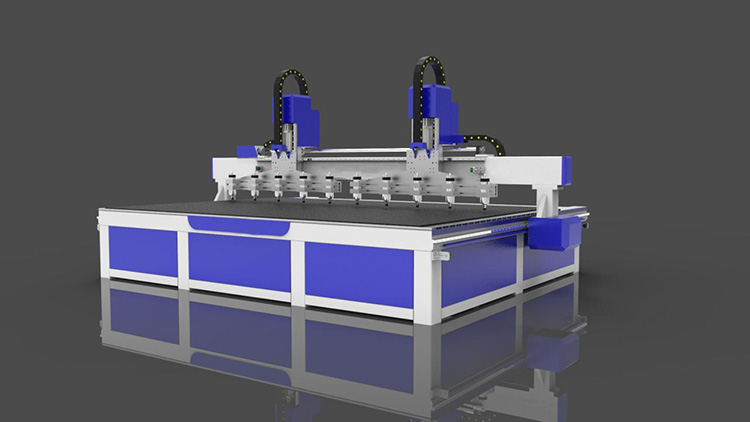
- English
- Español
- Português
- русский
- Français
- 日本語
- Deutsch
- tiếng Việt
- Italiano
- Nederlands
- ภาษาไทย
- Polski
- 한국어
- Svenska
- magyar
- Malay
- বাংলা ভাষার
- Dansk
- Suomi
- हिन्दी
- Pilipino
- Türkçe
- Gaeilge
- العربية
- Indonesia
- Norsk
- تمل
- český
- ελληνικά
- український
- Javanese
- فارسی
- தமிழ்
- తెలుగు
- नेपाली
- Burmese
- български
- ລາວ
- Latine
- Қазақша
- Euskal
- Azərbaycan
- Slovenský jazyk
- Македонски
- Lietuvos
- Eesti Keel
- Română
- Slovenski
- मराठी
- Srpski језик
CNC vs 3D Printers: A Simple Explanation of the Differences
2023-08-02
CNC (Computer Numerical Control) machines and 3D printers are both cutting-edge manufacturing technologies, but they differ markedly in their operation, functionality and applications. Let's explore the key differences between CNC and 3D printers!

1. Manufacturing process:
CNC: CNC machines are subtractive manufacturing equipment. They start with a solid piece of material (e.g. metal, wood, plastic) and then use cutting tools to remove the material and mold it into the desired final shape.
3D Printers: 3D printers are additive manufacturing equipment. They build objects layer by layer, adding material (usually in the form of plastic filament or resin) to create the final 3D object.
2. Principle of operation:
CNC: CNC machines follow pre-programmed instructions in the form of G-codes that control the movement of cutting tools to precisely shape the material.
3D Printer: 3D printers utilize a digital 3D model (usually in STL format) and slicing software to generate the necessary instructions for each layer to be deposited in order to create a physical representation of the model.
3. Types of items produced:
CNC: CNC machines are ideally suited for creating 2D and 3D objects with complex designs that require high precision and smooth surface finishes. They are commonly used to produce complex parts, prototypes, molds, and functional components.
3D Printers: 3D printers excel at creating prototypes, custom designs and one-off objects. They are versatile and used in a wide range of industries, including product design, medical, architecture, and art. 4.
4. Material compatibility:
CNC: CNC machines can process a wide range of materials, including metal, wood, plastics, and composites. The choice of material depends on the functionality and application requirements of the specific CNC machine.
3D Printers: 3D printers primarily use thermoplastic or resin-based materials such as ABS and PLA. However, some advanced 3D printers can handle other materials such as metals, ceramics, and even food.
5. Surface finish and tolerances:
CNC: CNC machining provides excellent surface finish and high precision, making it suitable for engineering-grade parts with tight tolerances.
3D Printers: 3D printing tends to have a rougher surface finish and may not achieve the same level of accuracy as CNC machining. However, advances in technology have improved the surface quality of 3D printed parts.
6. Speed and throughput:
CNC: CNC machining can often produce multiple identical parts much faster, making it more suitable for medium to high production volumes.
3D Printers: 3D printing can be slower, especially for complex objects, making it more suited for low to medium throughput or one-off creations.
In summary, CNC machines and 3D printers offer different manufacturing methods, each with their own advantages and applications. CNC is well suited to high-precision, complex and multi-material parts, while 3D printing excels at rapid prototyping, customization and small-scale production of complex designs. Depending on the specific requirements of your project, you can choose between CNC and 3D printing to ensure the best results and cost-effectiveness.



